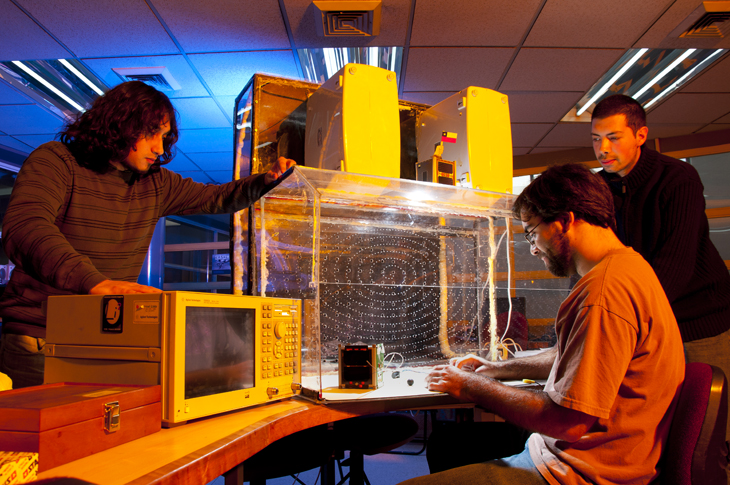

SPEL serves as a hub for researchers, engineers and students at University of Chile (UCH) and University of Santiago of Chile (USACH) to collaborate on space physics and space instrumentation. Highlighted activities are related to ionospheric modeling and simulation, small satellites development (Femto, pico and nanosatellites) and space instrumentation (Magnetometers, Langmuir Probes).
The expertise of the laboratory team has been also used in multiple geoscientific initiatives. In particular, SPEL is collaborating with different initiatives of the Geophysics Department at UCH related to atmospheric and seismic measurements.
In the last two decades space technology has moved from a multi goal, large and expensive approach to a Faster-Better-Cheaper approach for space missions. Following that trend, SPEL has been working on methodologies that allow simplify missions (technically and organizationally) and reduce costs. In this area, it has been exploring two lines of action distributed measuring (sensor networks) and miniaturization of systems (less space, weight and power consumption).
Space and Planetary Exploration Laboratory (SPEL) was built in 2011 in the Electrical Engineering Department of the University of Chile to serve as the headquarters of the design, construction, development and test of the first chilean nanosatellite, SUChAI. Since that year, many students have contributed to the SUChAI project and others, extending the areas of the laboratory. Currently, SPEL has strong relations with the Radio Astronomy Instrumentation Group, Physics Department, Geophysics Department, Astronomy Department and Mechanical Engineering Department at Faculty of Physics and Mathematical Sciences (FCFM), Univeristy of Chile and Physics Department at University of Santiago of Chile.
